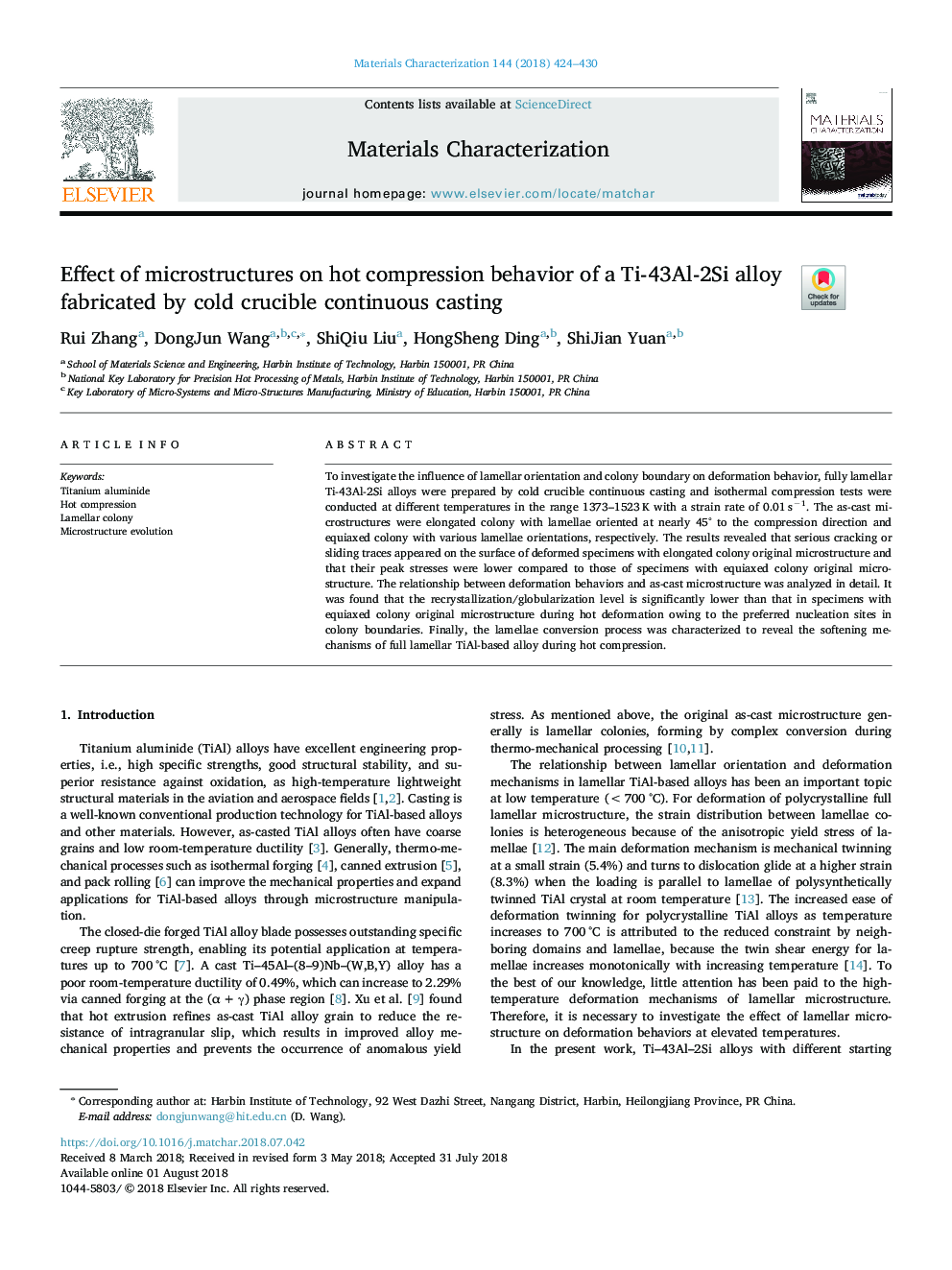| Article ID | Journal | Published Year | Pages | File Type |
|---|---|---|---|---|
| 7969057 | Materials Characterization | 2018 | 7 Pages |
Abstract
To investigate the influence of lamellar orientation and colony boundary on deformation behavior, fully lamellar Ti-43Al-2Si alloys were prepared by cold crucible continuous casting and isothermal compression tests were conducted at different temperatures in the range 1373-1523â¯K with a strain rate of 0.01â¯sâ1. The as-cast microstructures were elongated colony with lamellae oriented at nearly 45° to the compression direction and equiaxed colony with various lamellae orientations, respectively. The results revealed that serious cracking or sliding traces appeared on the surface of deformed specimens with elongated colony original microstructure and that their peak stresses were lower compared to those of specimens with equiaxed colony original microstructure. The relationship between deformation behaviors and as-cast microstructure was analyzed in detail. It was found that the recrystallization/globularization level is significantly lower than that in specimens with equiaxed colony original microstructure during hot deformation owing to the preferred nucleation sites in colony boundaries. Finally, the lamellae conversion process was characterized to reveal the softening mechanisms of full lamellar TiAl-based alloy during hot compression.
Related Topics
Physical Sciences and Engineering
Materials Science
Materials Science (General)
Authors
Rui Zhang, DongJun Wang, ShiQiu Liu, HongSheng Ding, ShiJian Yuan,
